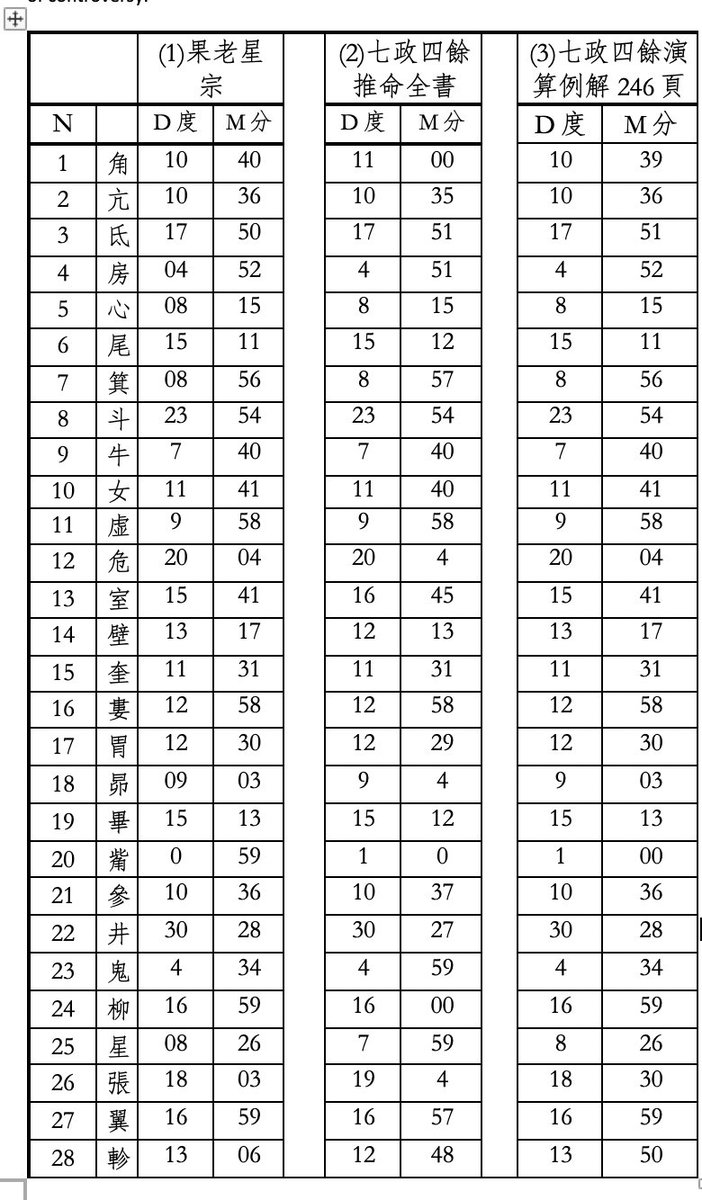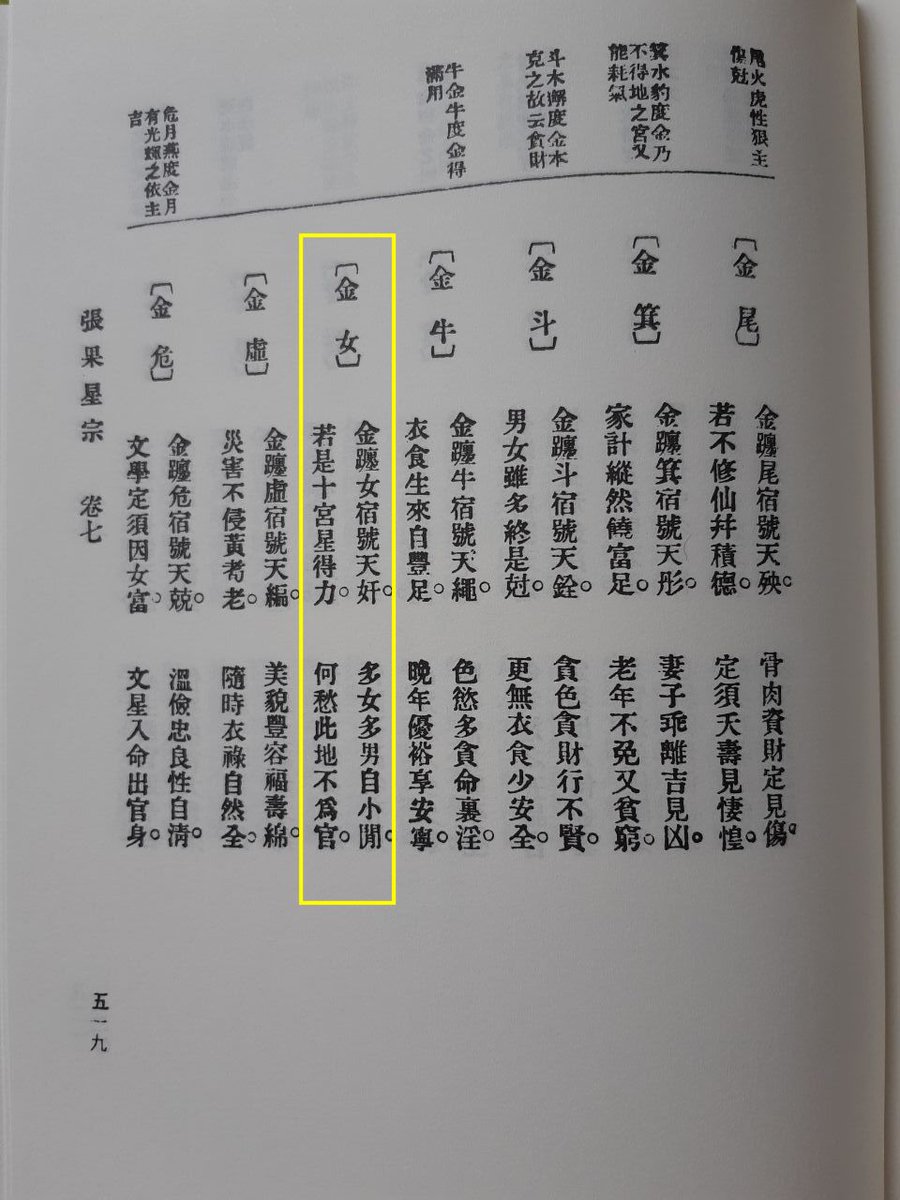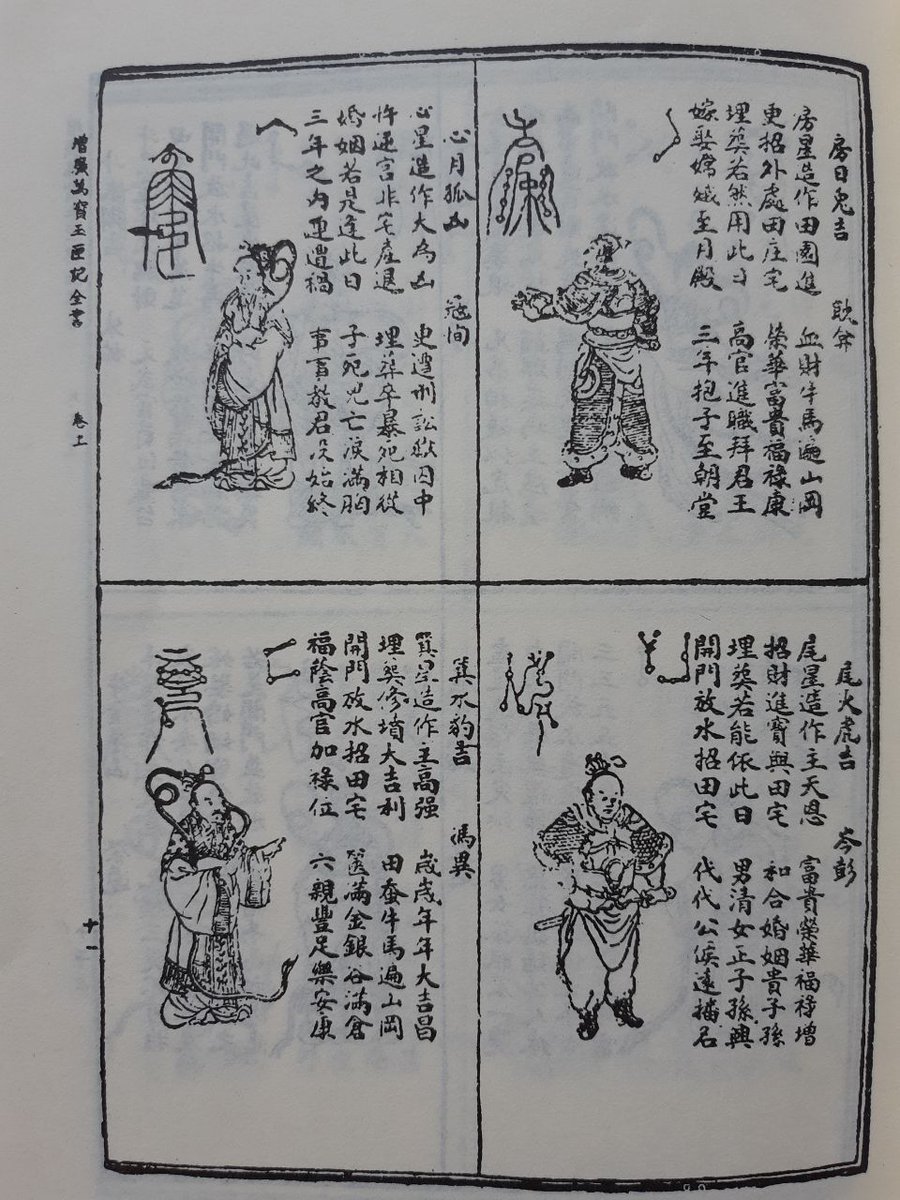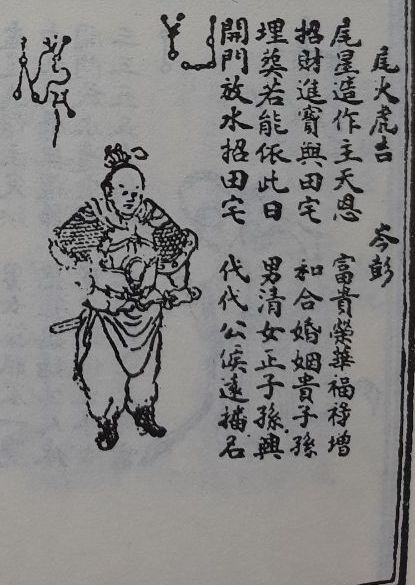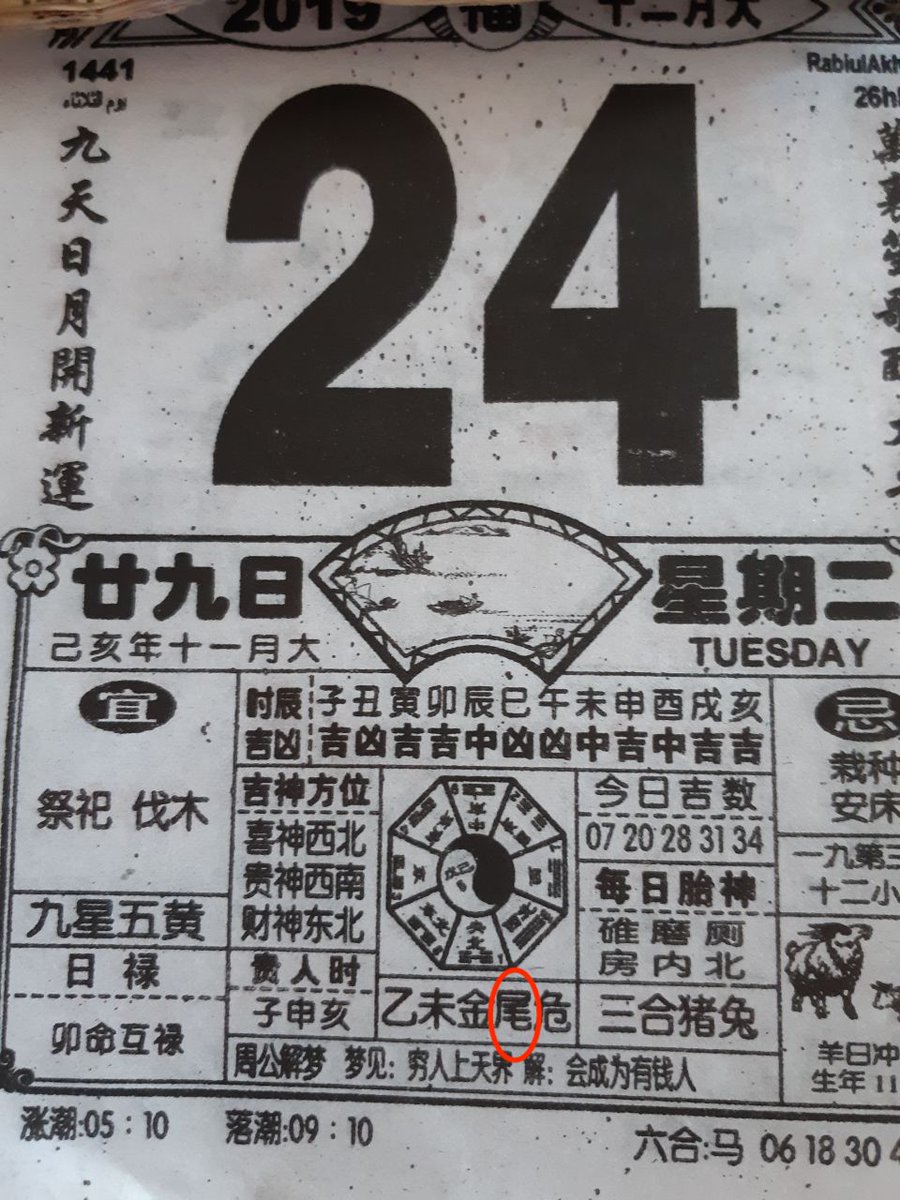1/ Today I want to talk about the Chinese Lunar Mansions. This is going to be a loooong thread.
Many have heard about the Chinese system of Lunar mansions. But to my knowledge, almost nothing has been written about their current use in English.
Many have heard about the Chinese system of Lunar mansions. But to my knowledge, almost nothing has been written about their current use in English.
1/The 28 Mansions are a set of 28 Constellations. The Chinese call these ‘mansions’ Xiu 宿. You should pronounce the word like “Hsiu” or “Shoo”, with stress on the “Sh”. It is the term for a lodging house of any type. For example, Dormitories are still called 宿舍, Xiu She.
2/ Their names are well-known enough. You can find their names on the following Wiki article: https://en.wikipedia.org/wiki/Twenty-Eight_Mansions
These constellations were used as a coordinate system by the Chinese astrologers and astronomers. I shall set out how they are used in the following posts.
These constellations were used as a coordinate system by the Chinese astrologers and astronomers. I shall set out how they are used in the following posts.
3/ The Xiu divide the sky into 28 unevenly-sized segments. This is because they their cusps are the positions of 28 notable fixed stars. You can find the list of stars on Wikipedia. https://en.wikipedia.org/wiki/Twenty-Eight_Mansions
4/ Here are the ecliptic coordinates of their cusps as of 1904: (Taken from "A practical guide to selecting auspicious days by Heavenly Stars" Tianxing Suanfa Shiwu= "" 天星擇日算法實務, by Zhong yiming 鍾義明, pub'd by Wulin Chubanshe 武陵出版社,, 1997], along with a transl.
At this point I should point out vital differences between the Western and the Chinese systems The first difference is their size. The western mansions are evenly sized. They are all 12°51’ wide (i.e. one twenty-eighth of a circle).
6/ The Chinese ones are very unevenly sized. They can be as wide as 20 degrees or as narrow as 1 degree. Here is a table of Xiu widths, as taken from 3 books: There are slight disagreements of a few degrees between them, but you get the general idea.
7/The second difference is their position. The western system [usually] does not precess the mansions, so the lunar mansions retain the same position relative to the Vernal equinox point. By contrast, the Chinese mansions are exclusively sidereal in nature...
8/ As such, you must re-calculate the cusps for the year of the nativity. In that resp. they are similar to Indian Nakshatras, as they are tied to a Sidereal Zodiac. However, the Nakshatras are evenly sized, unlike the very uneven Chinese mansions.
9/ I should also say something about the ‘ayanamsa’ used for the Xiu. The books give a ‘radix table’ for the xiu, like https://twitter.com/edwardW2/status/1209076260258762754 You are supposed to add the precession (usually set at 50.3 seconds per annum) multiplied by the number of years you are distant...
10/ the table. So if we know the cusp of the 1st lunar mansion, 角, (the Horns) in 1904 was 22 lib 14; and you wanted to know where it was in 2004. Add 100 years worth of precession (0°50.3′ x 100 = 1°24′) to 22 lib 14, and you will get 23 lib 38; the relevant cusp.
11/ Some books say the Xiu are an Equatorial coordinate system. Whilst this may have been true in the past, it is no longer so. All the books I have access to treat them as a kind of Sidereal ‘Zodiac’, with the ecliptic Longitude of each star marking the cusp of each ‘sign’
12/ You can see this most clearly in what the Chinese call the “Heaven Measuring ruler” or Liangtian Che量天尺, This is a table that showed the 360 degrees of the Tropical Zodiac, with the cusps of the 28 Xiu written under the relevant degree. Here is one such example
12/ This was taken form an edition of the 果老星宗 "Guolao Xinzhong", published by the Juwen Shuju 集文書局
14: Here is the same table, annotated:
As you can see, the Xiu function as a kind of ‘constellational zodiac’ . So 0 Cap corresponds to the “0th” or Yuan 元 degree of the Lunar mansion Ji, the sive , 2 Aries corresponds to the 1st degree of that mansion...
As you can see, the Xiu function as a kind of ‘constellational zodiac’ . So 0 Cap corresponds to the “0th” or Yuan 元 degree of the Lunar mansion Ji, the sive , 2 Aries corresponds to the 1st degree of that mansion...
15/ and so on until 9 degrees and 8 minutes of Aries where we encounter the next mansion, Dou, the dipper. (the minutes are written beneath the name of the mansion, in Suzhou numerals)
16/The count restarts; so 10 cap is the 1st degree of dou and so on so forth for another 23-odd degrees. In the processs, it stretches over to Aquarius (i.e. the next line) at precisely “21 d 8m of Dou”At 3 Aquarius, 15 we see the cusp of the next mansion, the Cow.
17/ Then 4 aqu becomes the 1st degree of the Cow, 5 aqu the 2nd degree and so on till 11 aqu 5, which is the zeroth degree of the Lady and and so on so forth.
18/ Obviously, because of precesion, the Heaven Measuring Ruler had to be updated every decade or so.That edition has about a dozen of these tables, spanning the late 18th century to the 1920s. the table I featured was for 1902
19/ Nonetheless, most chinese almanacs give the planetary coordinates in terms of the standard, 12-sign zodiac. However, one almanac, Chung Fu Tang (= zhongfu tang) 宗福堂 of Taiwan still gives planetary coordinates in terms of lunar mansions
20/ That is as much as I have been able to gain from reading the books of Chinese astrology; There may be errors within this post. If so, I would be most glad to know of them. For too long has this ancient art been shrouded in confusion.
21/ The Chinese use both the Mansions and tropical zodiac signs in delineations. the Guolao Xingzhong has sections which show delineations for each planet. Here is the delination for Venus in the signs of the tropical zodiac (highlighted portion is for Aquarius)
22/ Transcription 【金子】 太白之星到寶瓶,名為玉格福非輕。丙丁之命如降此,不特長命更福英
Attempt at Translation: "When the Great White star [Ven] enters the Precious Vase [Aqu]/ It is the Jade combination; Wealth will not be light/ But if a person born of Bing or Ding has it/ It does not support a long life, or fortune and valor for that matter"
Cf Dorotheus' prediction for this combination: "If Venus was in a house of Saturn [...] He will have sex with a woman or the women of his brothers; and if he were a slave he will be emancipated & have sex with his mistress" (Ben Dykes transl)
25/ At the same time, the Guolao Xingzhong also gives the delineations for the planets in the Lunar mansions. At time of writing, the lunar mansions of the Dipper 斗, cow 牛, Woman 女 and Void 虛 are in aqu: Highlighted is the sect for Lunar mansion of Woman:
26/ transcription: 金星躔女號天奸。女多男多自小閒。若是十宮星得力。何愁此地不為官。
27/ Attempt at translation: "If venus steps in the Lady, this combination is called "Heaven's treachery"/ Women will be many; men will be many, he shall have little rest/ But if the star gains strength in the 10th house/ Why worry about not being an official in this land [?]
28/
https://twitter.com/astrosaurus_/status/1209119524164816896
I must admit the present poems are a pretty good example of this phenomena... but if the Prajnaparamita literature can be translated into english, surely a competent person can translate the Guolao Xingzhong...
https://twitter.com/astrosaurus_/status/1209119524164816896
I must admit the present poems are a pretty good example of this phenomena... but if the Prajnaparamita literature can be translated into english, surely a competent person can translate the Guolao Xingzhong...
29/ I should add the word translated as "treachery" , jian, 奸can also mean "Adultery" or "rape" depending on the context. On reflection "Heaven's adultery" might've been a better transl. https://twitter.com/edwardW2/status/1209297695581462530
31/Not related to Xiu; IN addition to giving delineations for each planet in a sign & the Lunar Mansion, the Guolao Xingzhong also provides delineations for planets in the 12 houses, and planets in conjunction....
32/ The last of these, called the 聿斯經 "Yusi Jing" has been linked to the celebrated Carmen astrologicum of Dorotheus. Looking at the Arabic transl. of Dorotheus, we find extensive delineations of planets in aspect (book 2) For more vide http://sino-platonic.org/complete/spp282_Indo-Iranian_Astrology_China.pdf p. 17
33/ On to a more modern uses of the Xiu. What i have described above refers to the ancient method of Chinese horoscopy - the use of the planets and stars to predict events. Whilst historically significant, this is no longer the main form of astrology today.
33/ The main forms of astrology, such as Bazi or eight characters or Four pillars are *WHOLLY SOLAR IN NATURE*. they do not even look at the Lunar months of the chinese calendar. The only major exception is Ziwei Doushu 紫微斗數, which does use the lunar calendar.
34/ But I have digressed. So the main use of the Xiu today is in the form of a 28-day cycle. It is merely a cycle, and has as much to do with the astronomical 28 lunar mansions as our 7-day week has to do with the motions of the 7 classical planets.
35/ This cycle is chiefly used in elections. Here is a section from the 竹林書局 edition of the 玉匣記, which shows 4 of the mansions
36/ Each of the mansions is associated with a particular god, an animal, and a planet. A 8-line rhyme shows what happens when you do something on the day assigned to a mansion. This is mansion no. 6, Wei 尾 (the tail)
37/ transcription: 尾火虎吉 岑彭。
尾星造作主天恩。富贵榮華福禄增。
招財進寶與田宅。和合婚姻貴子孫。
埋葬若能依此日。男清女正子孫興。
開門放水招田宅。代代公侯远播名。
尾星造作主天恩。富贵榮華福禄增。
招財進寶與田宅。和合婚姻貴子孫。
埋葬若能依此日。男清女正子孫興。
開門放水招田宅。代代公侯远播名。
38/ translation
Wei, the Fire-Tiger. Auspicious. Cen Peng.
Constructing on Wei will bring heaven’s grace.
Wealth, glory, fortune, rank will increase,
Along with wealth, treasures and land.
Marriage harmonious; [producing] noble sons.
If burial is conducted on this day, [...]
Wei, the Fire-Tiger. Auspicious. Cen Peng.
Constructing on Wei will bring heaven’s grace.
Wealth, glory, fortune, rank will increase,
Along with wealth, treasures and land.
Marriage harmonious; [producing] noble sons.
If burial is conducted on this day, [...]
39/ transl. cont'd
[...] Men will be pure, Women upright, children will flourish.
Opening doors, and releasing water will bring in lands and buildings.
Generation after generation will be nobles, their names widely known.
[...] Men will be pure, Women upright, children will flourish.
Opening doors, and releasing water will bring in lands and buildings.
Generation after generation will be nobles, their names widely known.
Astute readers would have noticed that 28 is equal to 7 times four. As such, this 28-day cycle maps exactly to the 7 western-day week. This is further reflected in the names of the xiu.
41/ so for example, the name of the above xiu is 尾火虎, Wei, the fire-tiger. The "Fire star' 火星 is what the Chinese call Mars. Tuesday is associated with Mars (dies Martis, Martedi) Days assigned to Wei always fall on Tuesdays.
43/ But the most remarkable has to do with the days associated with the Lunar mansions assigned to the suns-- i.e. our Sundays. here is a passage from a recent book 擇日學講義"A discourse on the study of selecting dates" by 鍾茂基, pub'd by 武武陵出版社.
43/ In brief, The four Lunar Mansions associated with the sun (虛,昴房 ,星) are called Mi-Days '密日'. Such days are inauspicious for burial, with the exception of 房 . however, this taboo is controversial. The book goes on to quote the celebrated Xiejibian Fangshu 協記辦方書
44/ In summary, it says. In other lands, Mi-days are associated with celebration; ”密日彼地主喜事“. But the Chinese consider it bad for burial, allegedly bc Burial, a dark, yin activity, is opposed to the Sun, or the Great Yang. The book dismisses this as "complete nonsense"
45/ Nonetheless Conservative taiwanese almanacs still dutifully mark out the Sundays/mi-days; but other almanacs (as the abovementioned source points out) ignore it.
46/ Returning to astrology, the 28 Mansions have interesting implications for the tropical-sidereal debate. What you have in the Guolao Xinzong is, effectively tropical and Sidereal zodiacs co-existing, each with its own delineations. https://twitter.com/edwardW2/status/1209292466936901632
47/ Perhaps the closest western forms of astrology has come to the 28 xiu are the 19thc. western astrologers who put loads of fixed stars in their charts; but then again, the fixed stars were treated as points to be aspected, not spaces inhabited by the planets.
48/ On further reflection, perhaps it is best to characterise this system as a fully constellational zodiac. The boundaries of the "signs" are not evenly divided (as with the case of the Nakshatras, ane even the 12-sign sidereal zodiac) but are irregular in extent...
49/ [by system, i meant "system of Xiu as described from tweets 1-19]
... depending on the position of the stars. True, some astrologers like Lilly divided the sky into neighbourhoods of stars https://twitter.com/edwardW2/status/1273999304252723200 with various properties...
... depending on the position of the stars. True, some astrologers like Lilly divided the sky into neighbourhoods of stars https://twitter.com/edwardW2/status/1273999304252723200 with various properties...
50/ but he did not sub-divide each "Neighbourhood" into individual degrees, allowing the position of planets to be taken relative to that "Sign" as is done with the Chinese Xiu.

 Read on Twitter
Read on Twitter![4/ Here are the ecliptic coordinates of their cusps as of 1904: (Taken from "A practical guide to selecting auspicious days by Heavenly Stars" Tianxing Suanfa Shiwu= "" 天星擇日算法實務, by Zhong yiming 鍾義明, pub'd by Wulin Chubanshe 武陵出版社,, 1997], along with a transl. 4/ Here are the ecliptic coordinates of their cusps as of 1904: (Taken from "A practical guide to selecting auspicious days by Heavenly Stars" Tianxing Suanfa Shiwu= "" 天星擇日算法實務, by Zhong yiming 鍾義明, pub'd by Wulin Chubanshe 武陵出版社,, 1997], along with a transl.](https://pbs.twimg.com/media/EMeAcM5VUAAVaDV.jpg)
![4/ Here are the ecliptic coordinates of their cusps as of 1904: (Taken from "A practical guide to selecting auspicious days by Heavenly Stars" Tianxing Suanfa Shiwu= "" 天星擇日算法實務, by Zhong yiming 鍾義明, pub'd by Wulin Chubanshe 武陵出版社,, 1997], along with a transl. 4/ Here are the ecliptic coordinates of their cusps as of 1904: (Taken from "A practical guide to selecting auspicious days by Heavenly Stars" Tianxing Suanfa Shiwu= "" 天星擇日算法實務, by Zhong yiming 鍾義明, pub'd by Wulin Chubanshe 武陵出版社,, 1997], along with a transl.](https://pbs.twimg.com/media/EMeAcM4UYAAEmNQ.jpg)
